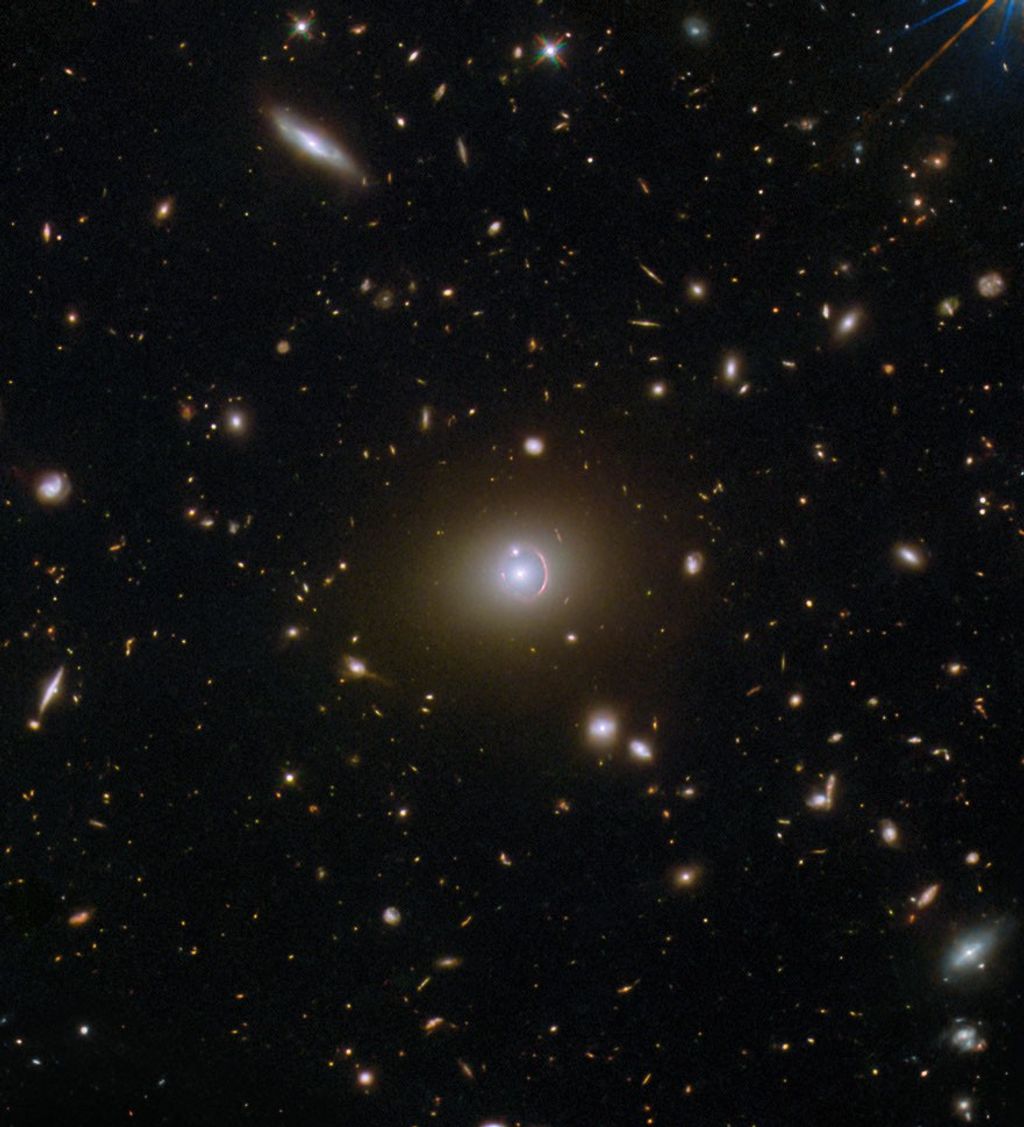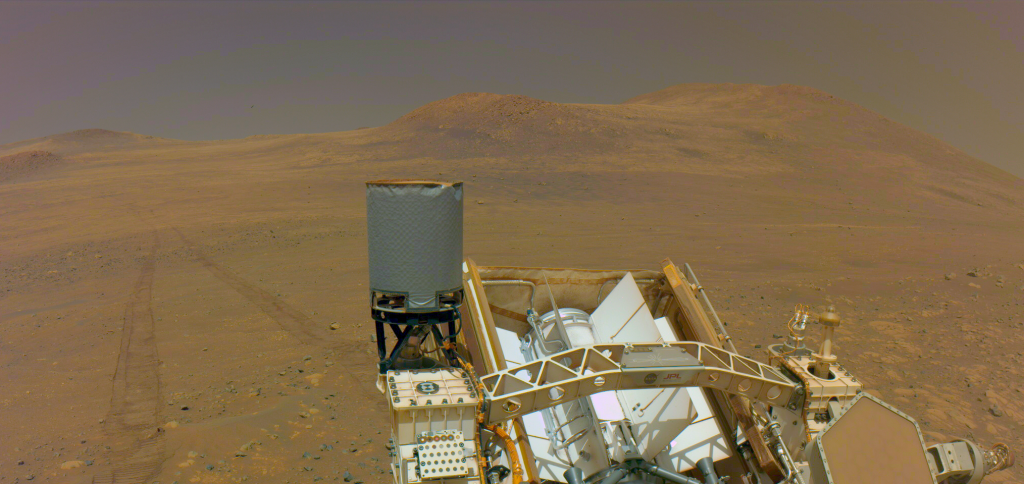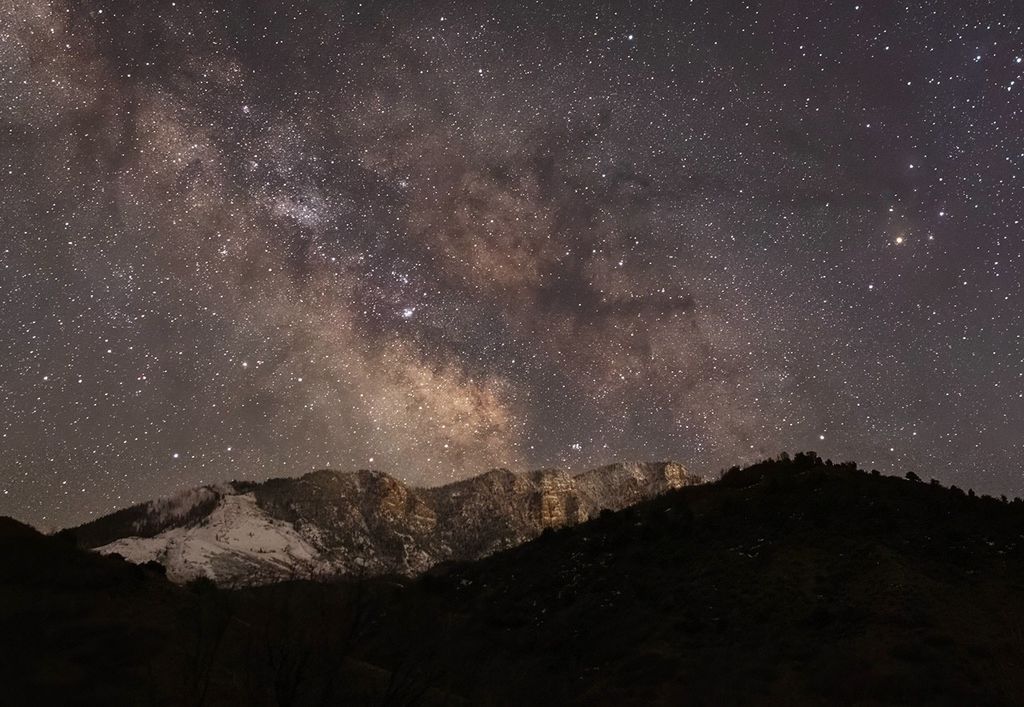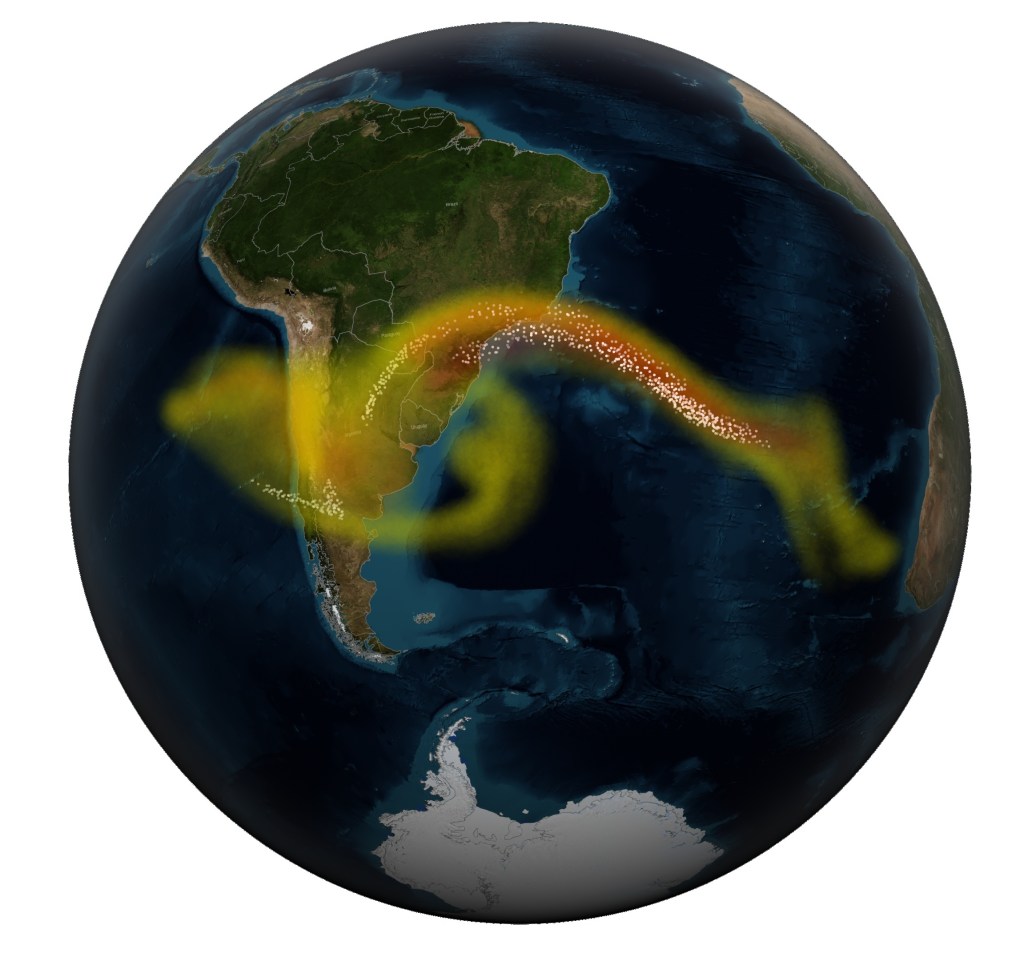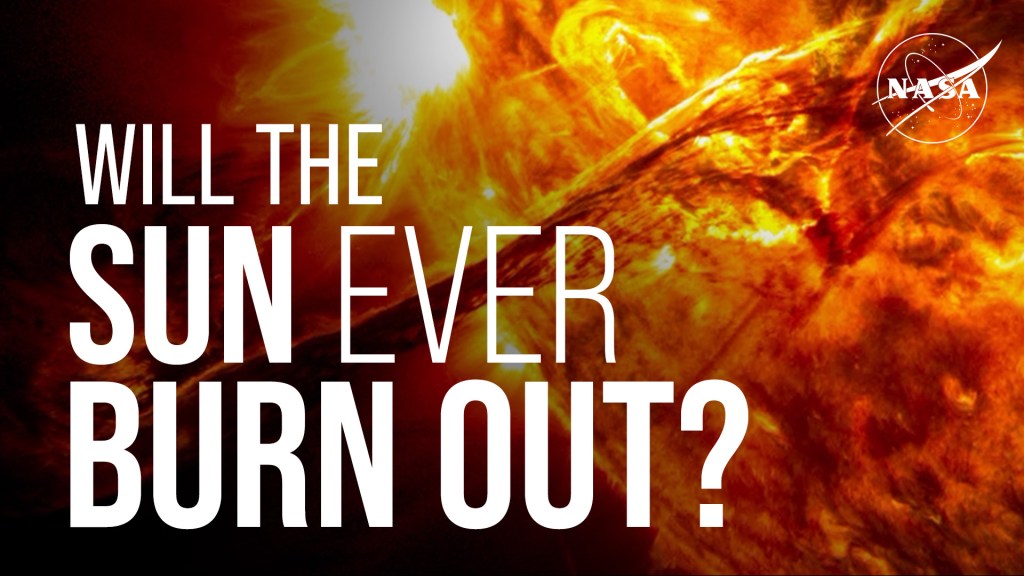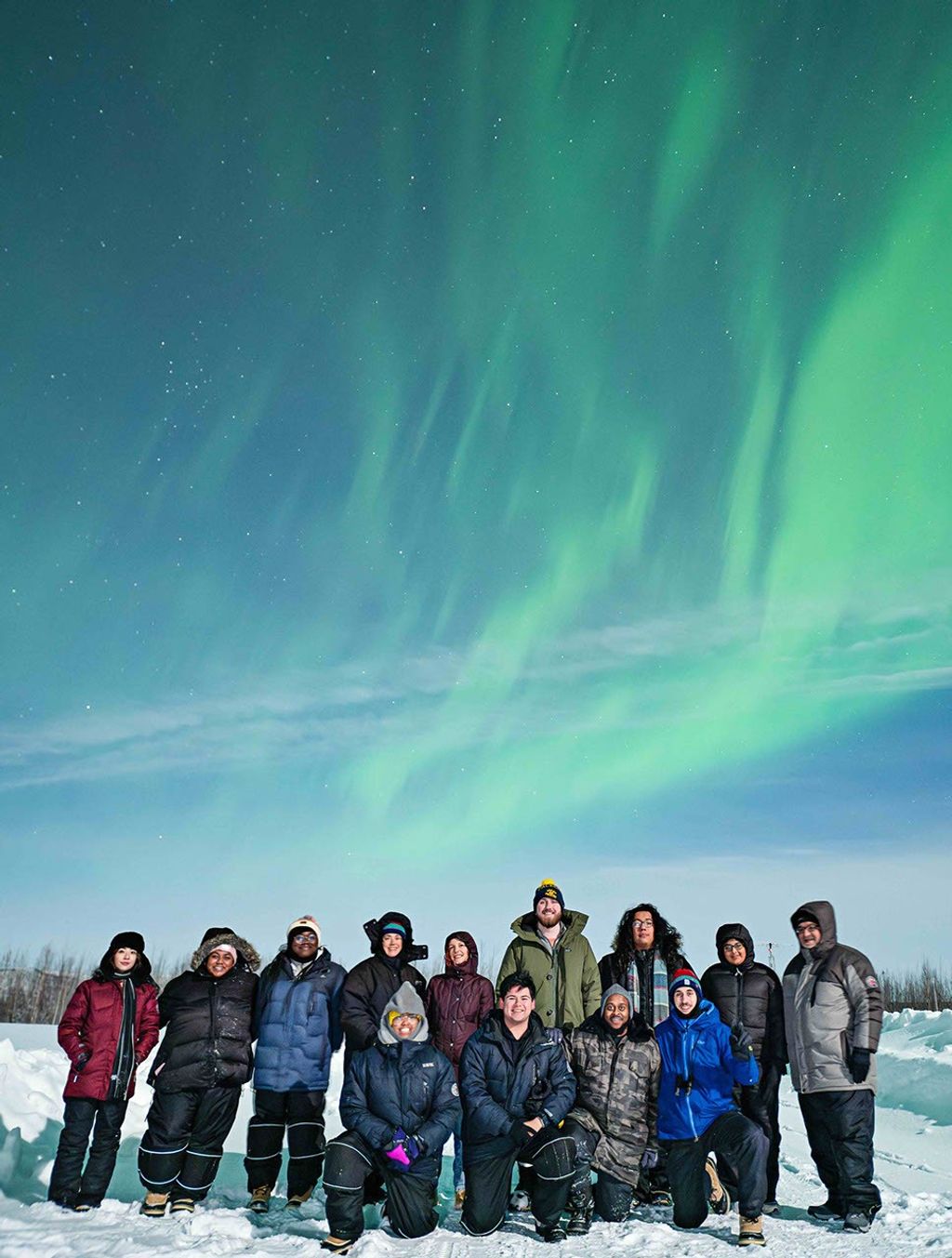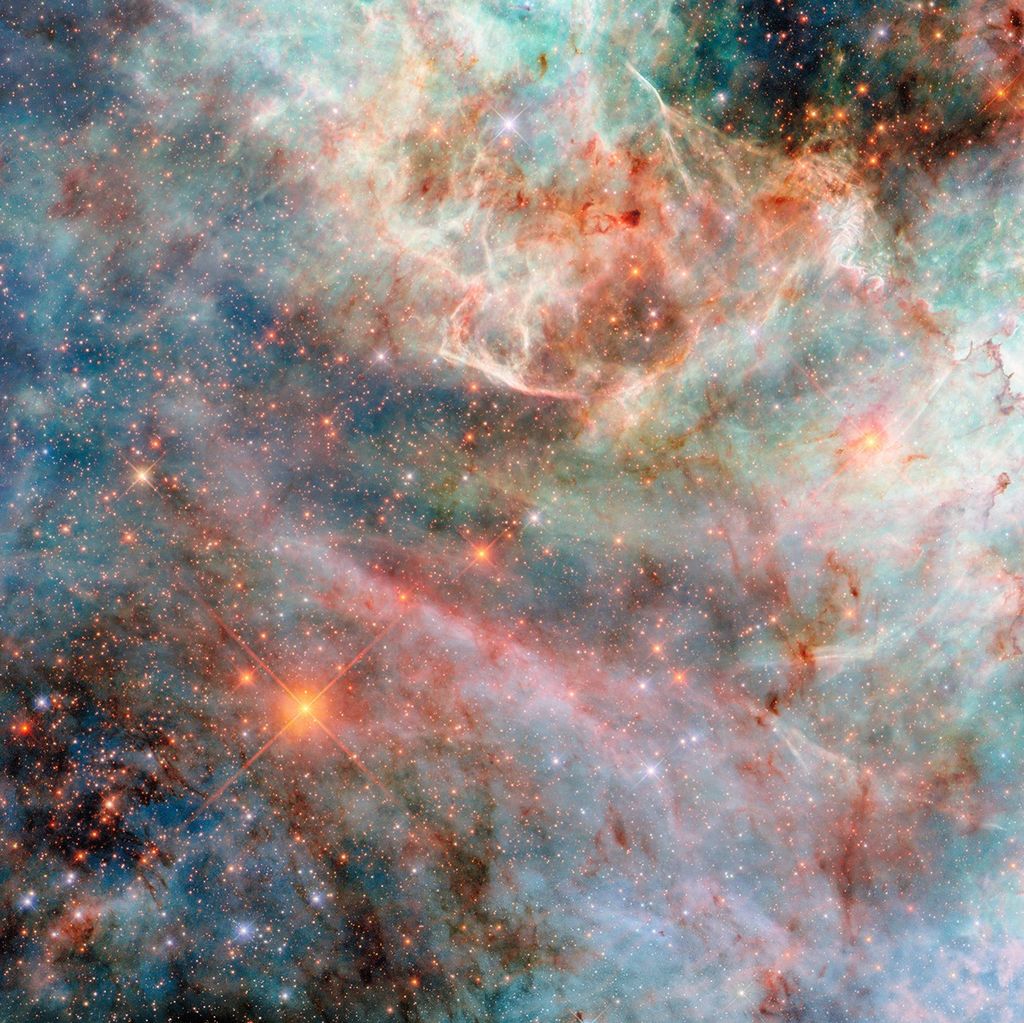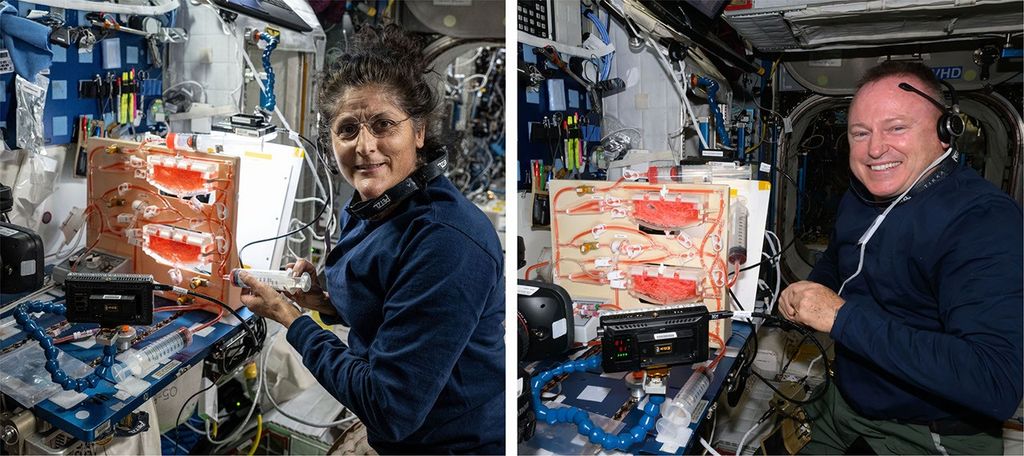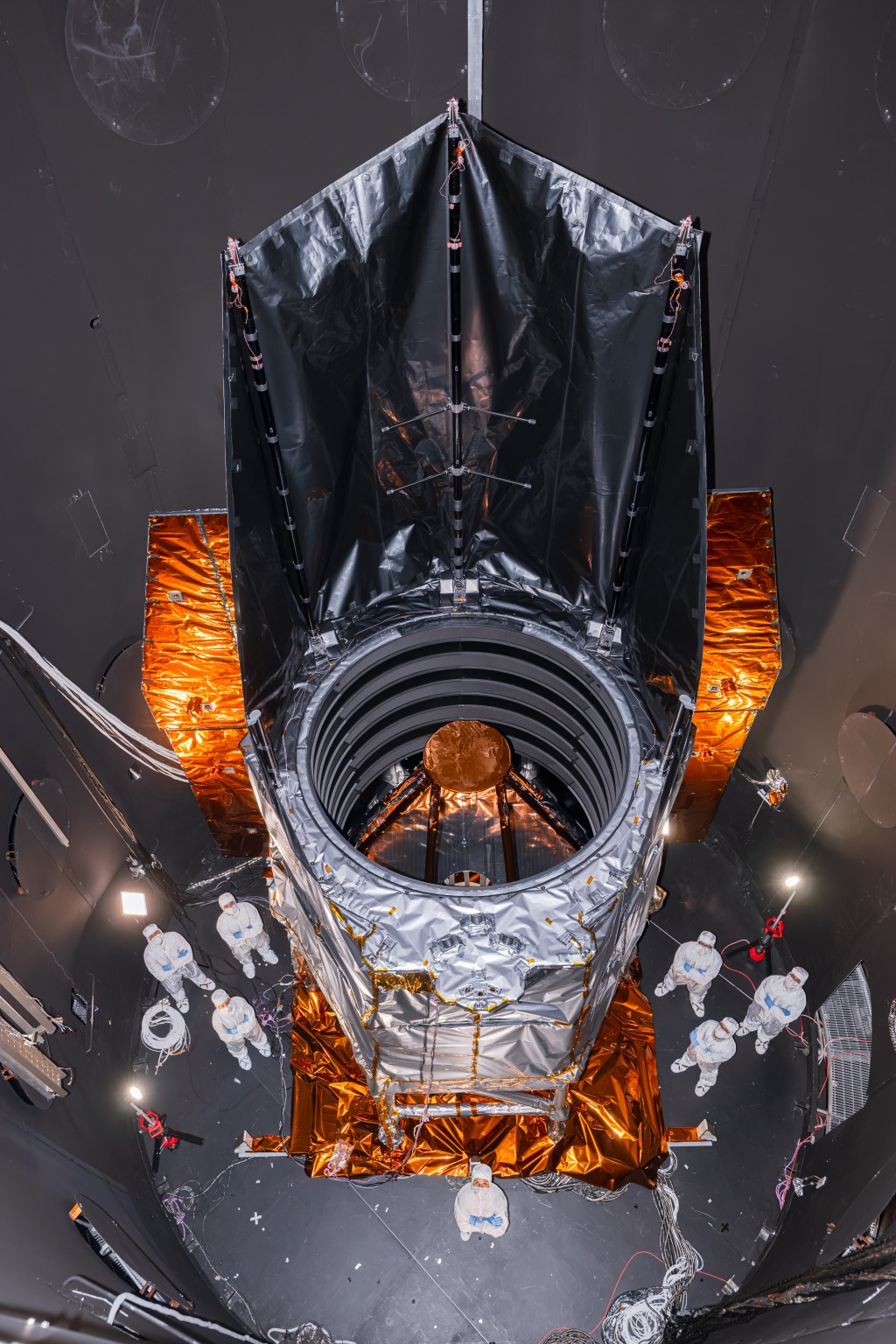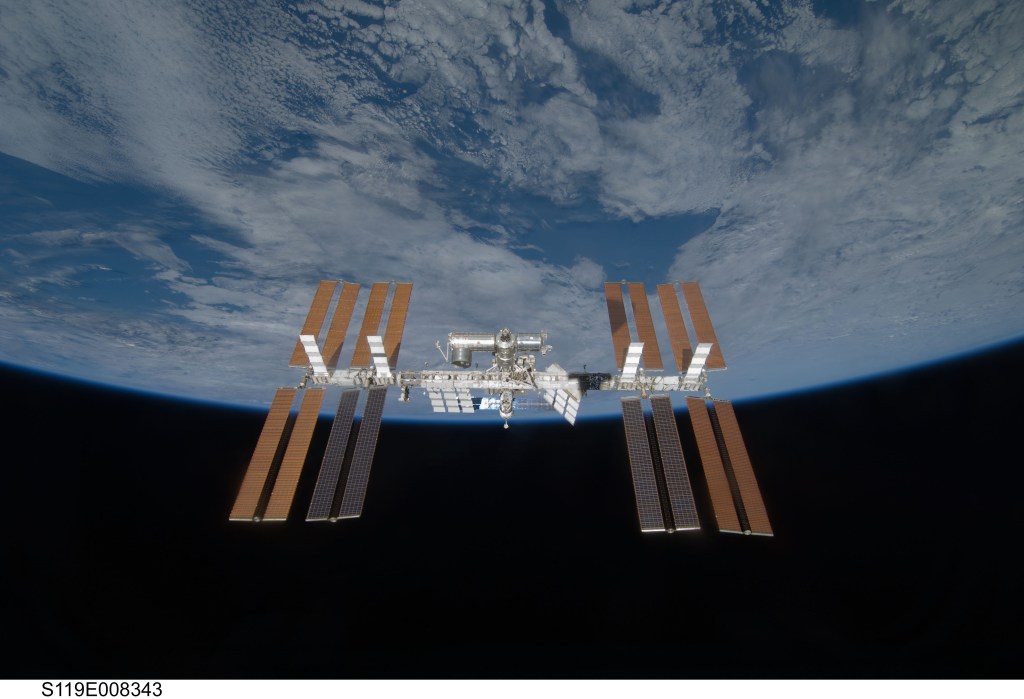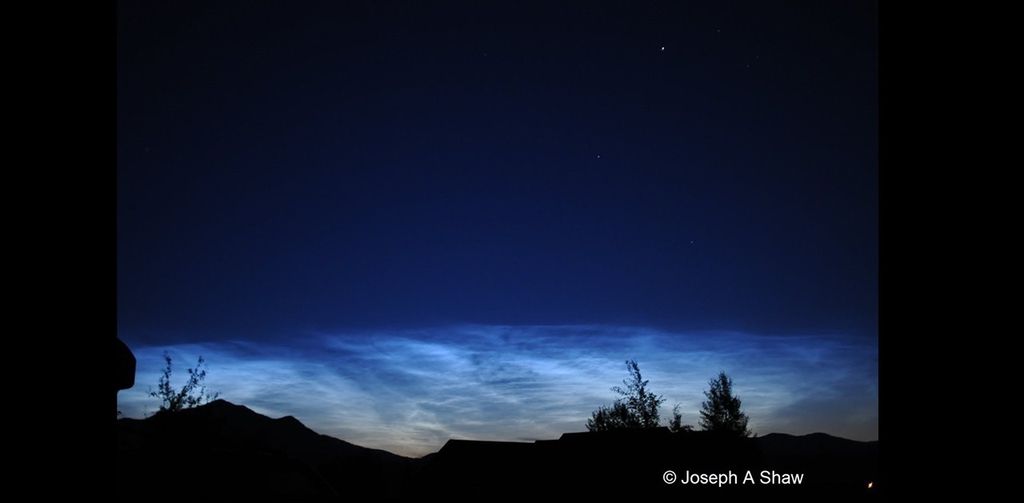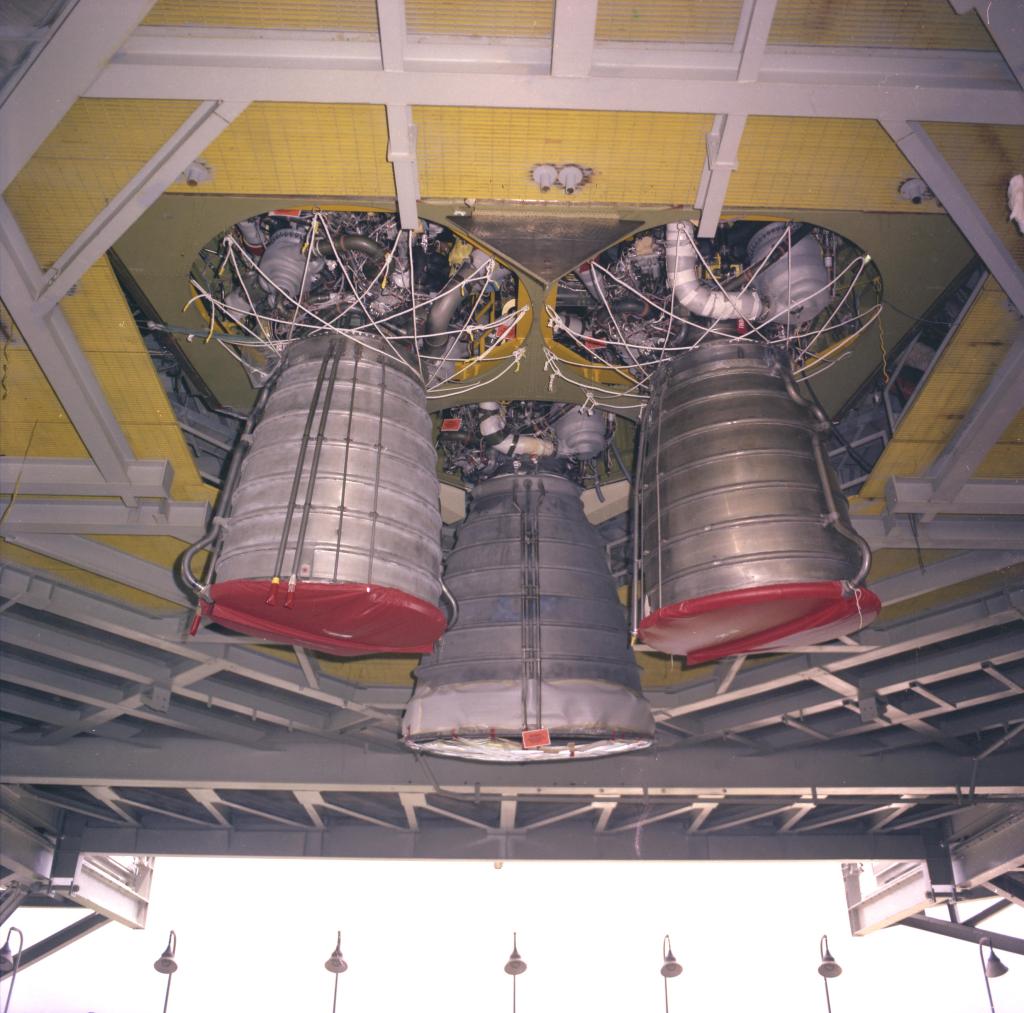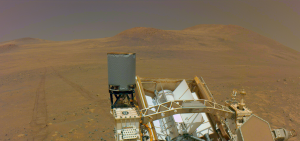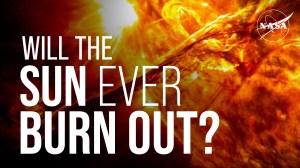The next full Moon will be just after midnight on Monday morning, January 21, 2019.
The next full Moon will be just after midnight on Monday morning, January 21, 2019, appearing "opposite" the Sun (in Earth-based longitude) at 12:16 AM EST. As the Moon passes opposite the Sun it will move through the shadow of the Earth, causing a total eclipse of the Moon. The Moon will begin entering the partial shadow on Sunday evening at 9:36 PM, but the gradual dimming of the Moon will not become noticeable until around the time the Moon begins to enter the full shadow at 10:34 PM. The round shadow of the Earth will gradually shift across the face of the Moon until the Moon is fully shaded beginning at 11:41 PM EST. The period of full shadow or total eclipse will last about 62 minutes, reaching the greatest eclipse Monday morning at 12:12 AM. The Moon will be exiting the full shadow of the Earth from 12:43 AM until 1:51 AM, with the round shadow of the Earth again shifting across the face of the Moon. The Moon will leave the last of the partial shadow at 2:48 AM, ending the eclipse.
If the sky is clear, the Moon in the full shadow of the Earth should appear dull brown to reddish in color, as the light of the Sun is bent towards the Moon by the atmosphere of the Earth. Although the Earth is blocking any direct light from the Sun, this glow is caused by all the sunrises and sunsets on Earth shining on the Moon at the same time. The color of the eclipse varies depending upon the sunrise/sunset conditions around the Earth. In 1921 André-Louis Danjon introduced a 5-point scale for measuring the color of lunar eclipses. The eclipsed Moon is sometimes called the Blood Moon because of the reddish color it can take. The name Blood Moon or Sanguine Moon is also used for the Hunter's Moon (usually in October), either because of the association with hunting or because of the color of the leaves at that time of year.
Except when it will be dimmed by the shadow of the Earth, this full Moon will be one of the brightest full Moons of the year. The term "supermoon" was introduced by astrologer Richard Nolle in 1979 and has become popular, particularly when it refers to a brighter than usual full Moon. By Richard Nolle's definition, the full Moons in January, February, and March of 2019 will be supermoons, with the closest and brightest of these the full Moon after next (in February). In addition, full Moons during northern hemisphere winters tend to be brighter, because the Earth and Moon are closer to the Sun and because the full Moon rides higher in the sky. This bright full Moon will appear full for about three days around the time of the eclipse, from Saturday night through Tuesday morning.
As the midwinter Moon or the second full Moon of winter, this is the Snow Moon or the Hunger Moon. The Maine Farmer's Almanac first published Indian names for the full Moons in the 1930's, and according to this almanac, this was known as the Snow Moon because of the heavy snows that fall in this season (NOAA long-term monthly averages for the Washington, DC area show January and February nearly tied as the snowiest months of the year). Bad weather and heavy snows made hunting difficult, so this Moon was also called the Hunger Moon. Many writers tie these Moon names to the European months, so that the full Moon in January is the Wolf Moon, regardless of whether it is the first or second Moon of winter. Most of the time the names by European month correspond with the names by season, but right now they are out of sync, and will remain so until the Spring of 2019.
In lunisolar calendars the months change with the new Moon and full Moons fall in the middle of the lunar months. This full Moon is the middle of the twelfth month of the Chinese calendar and Shevat in the Hebrew calendar. The 15th day of Shevat, corresponding with the Full Moon, is the holiday Tu BiShvat (Tu BiShvat begins at sunset on January 20 and ends at nightfall on January 21). Tu BiShvat is also called "Rosh HaShanah La'Ilanot" (literally "New Year of the Trees"). In contemporary Israel, the day is celebrated as an ecological awareness day, and trees are planted in celebration.
In the Islamic calendar the months start with the first sighting of the waxing crescent Moon a few days after the New Moon. This full Moon is near the middle of Jumada al-awwal, the fifth month of the Islamic year.
As usual, the wearing of suitably celebratory celestial attire is encouraged in honor of the full Moon.
Mark Your Calendars
As for other celestial events between now and the full Moon after next:
The day of the full Moon on Monday, January 21, 2019, morning twilight will begin at 6:21 AM, sunrise will be at 7:23 AM, the Sun will reach a maximum altitude of 31.3 degrees at 12:20 AM, sunset will be at 5:17 PM, and evening twilight will end at 6:18 PM EST. By the day of the full Moon on Tuesday, February 19, 2019, morning twilight will begin at 5:56 AM, sunrise will be at 6:55 AM, the Sun will reach a maximum altitude of 39.9 degrees at 12:22 PM, sunset will be at 5:50 PM, and evening twilight will end at 6:48 PM EST.
On the evening of the January full Moon, as evening twilight ends, Mars is the only planet visible, appearing high in the southwest (at about 52 degrees above the horizon for the Washington, DC area). Uranus and Neptune will also be in the sky, but too dim to see without a telescope. The trio of bright stars called the "Summer Triangle" will be setting in the west, while the bright stars of the local arm of our home galaxy, including the constellation Orion, will be rising in the east. Around the second week of February the planet Mercury will begin to emerge in the west-southwest about 30 minutes after sunset and by February 15 Mercury will be setting just as evening twilight ends. By the evening of the full Moon in February, as evening twilight ends, Mars will appear in the west-southwest about 48 degrees above the horizon, Mercury will appear in the west about 3 degrees above the horizon, the "Summer Triangle" will no longer be visible, and the local arm of our home galaxy will appear stretched across the sky from southeast to northwest.
On the morning of the January full Moon, as morning twilight begins, the brightest of the planets, Venus, as the Morning Star, will appear in the southeast about 21 degrees above the horizon. Near Venus to the lower right, the second brightest planet, Jupiter, will appear about 18 degrees above the horizon. The planet Saturn will just be rising in the east-southeast, having passed around the far side of the Sun as seen from Earth on January 2. The bright star nearest to directly overhead will be Arcturus. The "Summer triangle will be rising in the east-northeast. As the month progresses the Jupiter, Saturn, and the background of stars will appear to shift to the west, while Venus will appear to shift to the east towards Saturn. Venus and Saturn will appear at their closest the morning of the day before the full Moon in February.
Thursday evening into Friday morning, January 17 to 18, 2019, the bright star Aldebaran will appear near the waxing gibbous Moon. Aldebaran will appear to the right of the Moon as evening twilight ends (at 6:14 PM EST for the Washington, DC area) and will appear to shift lower and farther away from the Moon until Aldebaran sets in the west-northwest Friday morning (at 3:35 AM).
Even though they are not visible usually, I include in these Moon missives information about Near Earth Objects (mostly asteroids) that pass the Earth within about 15 lunar distances, because I find it interesting that we have discovered so many. On Saturday evening, January 19, 2019, at 5:55 PM EST (2019-Jan-19 22:55 UTC, Near Earth Object (2019 AB5), between 21 and 47 meters (69 to 155 feet) in size, will pass the Earth at between 7.4 and 7.5 lunar distances (nominally 7.5), traveling at 6.64 kilometers per second (14,859 miles per hour).
On Saturday night, January 19, 2019, at 8:18 PM EST (2019-Jan-20 01:18 UTC, Near Earth Object (2019 AZ8), between 18 and 41 meters (60 to 135 feet) in size, will pass the Earth at between 13.6 and 13.8 lunar distances (nominally 13.7), traveling at 9.98 kilometers per second (22,325 miles per hour).
On Sunday, January 20, 2019, at 12:39 PM EST (2019-Jan-20 17:39 UTC, Near Earth Object (2019 AO8), between 19 and 43 meters (63 to 141 feet) in size, will pass the Earth at between 10.3 and 10.4 lunar distances (nominally 10.3), traveling at 11.26 kilometers per second (25,192 miles per hour).
As mentioned above, the next full Moon will be just after midnight, early on Monday morning, January 21, 2019, at 12:16 AM EST. Sunday night into Monday morning will be a total eclipse of the Moon (with totality lasting from 11:41 PM Sunday night to 12:43 AM Monday morning). This full Moon will be the first of three supermoons (with the next full Moon in February the largest of these supermoons).
On Monday afternoon, January 21, 2019, at 3 PM EST, the Moon will be at perigee, its closest to the Earth for this orbit.
On Monday night, January 21, 2019, at about 10:35 PM EST (2019-Jan-22 03:35 UTC with 18 minutes uncertainty), Near Earth Object (2019 AX8), between 28 and 62 meters (91 to 204 feet) in size, will pass the Earth at between 17.1 and 18.9 lunar distances (nominally 18.0), traveling at 16.20 kilometers per second (36,243 miles per hour).
On Tuesday morning, January 22, 2019, the two brightest planets, Venus and Jupiter, will appear less than 3 degrees apart, rising in the east-southeast (at around 4:15 AM EST for the Washington, DC area) and appearing about 20 degrees above the horizon as morning twilight begins (at 6:21 AM).
On Tuesday night, January 22, 2019, at 7:28 PM EST (2019-Jan-23 00:28 UTC with 2 minutes uncertainty), Near Earth Object (2019 AS11), between 12 and 26 meters (38 to 85 feet) in size, will pass the Earth at between 6.9 and 7.0 lunar distances (nominally 7.0), traveling at 4.28 kilometers per second (9,566 miles per hour).
On Tuesday evening, January 22, 2019, the bright star Regulus will appear to the lower right of the full Moon. For the Washington, DC area, the Moon will rise in the east-northeast at 7:17 PM EST with Regulus rising 10 minutes later to the lower right of the Moon. The Moon will reach its highest in the sky Wednesday morning at 2:21 AM EST, and morning twilight will begin at 6:20 AM.
On Thursday night, January 24, 2019, at about 7:47 PM EST (2019-Jan-25 00:47 UTC with 5 minutes uncertainty), Near Earth Object (2019 AJ13), between 6 and 13 meters (19 to 43 feet) in size, will pass the Earth at between 7.5 and 7.7 lunar distances (nominally 7.6), traveling at 5.99 kilometers per second (13,399 miles per hour).
On Thursday night, January 24, 2019, at about 9:30 PM EST (2019-Jan-25 02:30 UTC with 18 minutes uncertainty), Near Earth Object (2019 AN12), between 22 and 49 meters (73 to 162 feet) in size, will pass the Earth at between 8.9 and 9.3 lunar distances (nominally 9.1), traveling at 20.26 kilometers per second (45,322 miles per hour).
On Friday morning, January 25, 2019, at about 6:59 AM EST (2019-Jan-25 11:59 UTC with 11 minutes uncertainty), Near Earth Object (2019 AG11), between 15 and 34 meters (50 to 112 feet) in size, will pass the Earth at between 8.5 and 8.7 lunar distances (nominally 8.6), traveling at 7.52 kilometers per second (16,827 miles per hour).
Sometime around Saturday morning, January 26, 2019 (2019-Jan-26 09:44 UTC with 8 hours 43 minutes uncertainty), Near Earth Object (2019 AA10), between 21 and 47 meters (69 to 155 feet) in size, will pass the Earth at between 5.4 and 5.8 lunar distances (nominally 5.6), traveling at 9.76 kilometers per second (21,835 miles per hour).
Sunday afternoon, January 27, 2019, the waning Moon will appear half-full as it reaches its last quarter at 4:10 PM EST.
On Tuesday evening, January 29, 2019, the planet Mercury will pass on the far side of the Sun as seen from the Earth, called superior conjunction.
On Monday morning, January 28, 2019, at about 5:32 AM EST (2019-Jan-28 10:32 UTC with 5 minutes uncertainty), Near Earth Object (2019 AP11), between 24 and 54 meters (80 to 178 feet) in size, will pass the Earth at between 10.0 and 10.3 lunar distances (nominally 10.2), traveling at 7.78 kilometers per second (17,393 miles per hour).
On Tuesday morning, January 29, 2019, at about 12:50 AM EST (2019-Jan-29 05:50 UTC with 17 minutes uncertainty), Near Earth Object (2019 AN11), between 23 and 52 meters (76 to 170 feet) in size, will pass the Earth at between 12.5 and 12.9 lunar distances (nominally 12.7), traveling at 8.06 kilometers per second (18,034 miles per hour).
On Tuesday afternoon, January 29, 2019, at 1:54 PM EST (2019-Jan-29 18:54 UTC, Near Earth Object (2013 CW32), between 111 and 248 meters (364 to 813 feet) in size, will pass the Earth at 13.9 lunar distances, traveling at 16.44 kilometers per second (36,775 miles per hour).
On Wednesday morning, January 30, 2019, the bright planet Jupiter will appear to the lower left of the waning crescent Moon. As morning twilight begins (at 6:16 AM EST for the Washington, DC area), they will appear in the southeast, with Venus, the brightest planet, further to the lower left, the bright star Antares to the lower right, and the planet Saturn rising even further to the lower left.
On Thursday morning, January 31, 2019, the Moon will appear to have shifted east to appear near Venus, forming a brilliant pairing of the two brightest objects in the night sky.
On Friday morning, February 1, 2019, the Moon will appear to have shifted again to the east, such that (from lower left to upper right) Saturn, the waning crescent Moon, Venus, Jupiter, and Antares appear about equally spaced.
On Friday afternoon, February 1, 2019, sometime around 3:45 PM EST (2019-Feb-01 20:45 UTC with 32 minutes uncertainty), Near Earth Object (2019 AV2), between 153 and 342 meters (502 to 1,122 feet) in size, will pass the Earth at between 17.4 and 17.7 lunar distances (nominally 17.5), traveling at 13.03 kilometers per second (29,158 miles per hour).
On Saturday morning, February 2, 2019, the Moon will appear to have shifted to appear to the lower left of Saturn low in the east-southeast.
Monday, February 4, 2019, at 4:04 PM EST, will be the new Moon, when the Moon passes between the Earth and the Sun and will not be visible from most of the Earth.
The New Moon marks the start of the new month for most lunisolar calendars. Since China Standard Time is 13 hours ahead of EST, Tuesday, January 5, 2019, is the Chinese New Year. The traditional celebrations start on the evening before and continue until the Lantern Festival (corresponding to the full Moon after next).
Lunisolar calendars use the cycles of the Moon for the months, but occasionally add an extra or "leap" month to keep the calendar tied to the solar seasons. In the Hebrew calendar, days start with sunset, and sundown on February 5 will be the start of Adar I, the extra or "leap" month for this calendar.
On Wednesday morning, February 6, 2019, at 1:30 AM EST (2019-Feb-06 06:30 UTC, Near Earth Object (2013 RV9), between 51 and 113 meters (166 to 372 feet) in size, will pass the Earth at 17.8 lunar distances, traveling at 5.88 kilometers per second (13,146 miles per hour).
Tuesday morning, February 5, 2019, at 4:29 AM EST, the Moon will be at apogee, its farthest from the Earth for this orbit.
In the Islamic calendar the months start with the first sighting of the waxing crescent Moon a few days after the New Moon. Wednesday evening, February 6, 2019, will mark the beginning of Jumada al-Thani, the sixth month of the Islamic calendar.
On Sunday evening, February 10, 2019, the planet appearing to the right of the waxing crescent Moon will be Mars.
On Tuesday morning, February 12, 2019, at around 8 AM EST (2019-Feb-12 12:42 UTC with 1 hour 4 minutes uncertainty), Near Earth Object (2017 PV25), between 32 and 71 meters (105 to 234 feet) in size, will pass the Earth at between 7.1 and 7.4 lunar distances (nominally 7.3), traveling at 6.09 kilometers per second (13,613 miles per hour).
On Tuesday evening, February 12, 2019, the Moon will appear half-full as it reaches its first quarter at 5:28 PM EST.
On Wednesday evening, February 13, 2019, the bright star Aldebaran will appear to the lower left near the waxing gibbous Moon. For the Washington, DC area, evening twilight will end at 6:42 PM, the Moon will reach its highest in the sky for the night at 7:01 PM, and Aldebaran will set Thursday morning at 2:07 AM EST.
On Monday morning, February 18, 2019, the bright planet Venus and the planet Saturn will appear nearest to each other in the morning sky, appearing about 12 degrees above the southeast horizon as morning twilight begins (at 5:58 AM EST for the Washington, DC area).
Monday night into Tuesday morning, February 18 to 19, 2019, the bright star that will appear to be shifting closer to the Moon throughout the night will be Regulus. Regulus will appear to the lower left of the Moon at the time the Moon is highest in the sky for the night (at midnight for the Washington, DC area), and will appear to shift closer until morning twilight begins (at 5:56 AM EST).
Tuesday morning, February 19, 2019, at 4:04 AM EST, the Moon will be at perigee, its closest to the Earth for this orbit.
The full Moon after next will be on Tuesday morning, February 19, 2019, at 10:54 AM EST (6 hours, 50 minutes after perigee, making this a supermoon).

